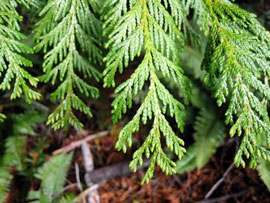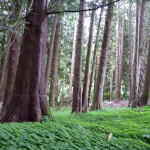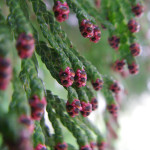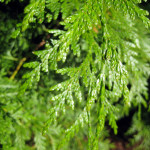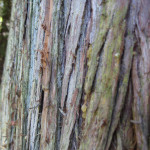Thuja plicata
Western redcedar (Thuja plicata) is a large evergreen conifer treasured not only for its beauty, but also its wildlife value and cultural significance going back to time immemorial.
Mature Western redcedars can get 115 – 230 feet tall. The flat, elegant sprays of foliage makes the tree look like it is draped with lace, especially when dusted with frost or snow. The cones are slender with overlapping scales. This tree is actually part of the cypress family, and not a true cedar (just like Douglas-fir is not a true fir).
Western redcedars make excellent wildlife habitat, providing food and shelter for many species. Rosners hairstreak butterflies are only found in association with this tree, as they depend on it for reproduction and food for their young. Large and small mammals feed on the leaves and inner bark for most of the year; squirrels and other rodents use its shredded bark for winter nests; and many birds and small mammals find shelter and nest sites in red cedar cavities.
Western redcedar is a iconic tree of the Pacific Northwest. If you have a shady, moist spot large enough for it to thrive, this is a beautiful and valuable addition to any forested landscape.
- Light Requirements: Full Sun, Part Shade, Full Shade
- Water Requirements: Moist, Seasonally Wet
- Ease of Growing: Easy to grow
- Growth Rate: Moderate
- Spreads: No
- Wildlife Support: Birds or Mammals
- Fire-resistant: No
- Edible: No
- Mature Height: 100-200ft
- Mature Width:30ft

